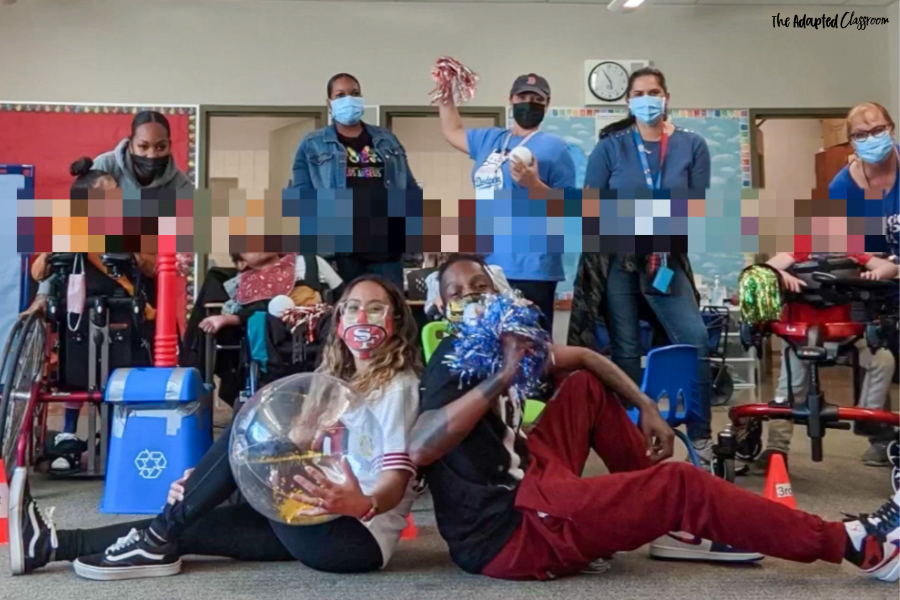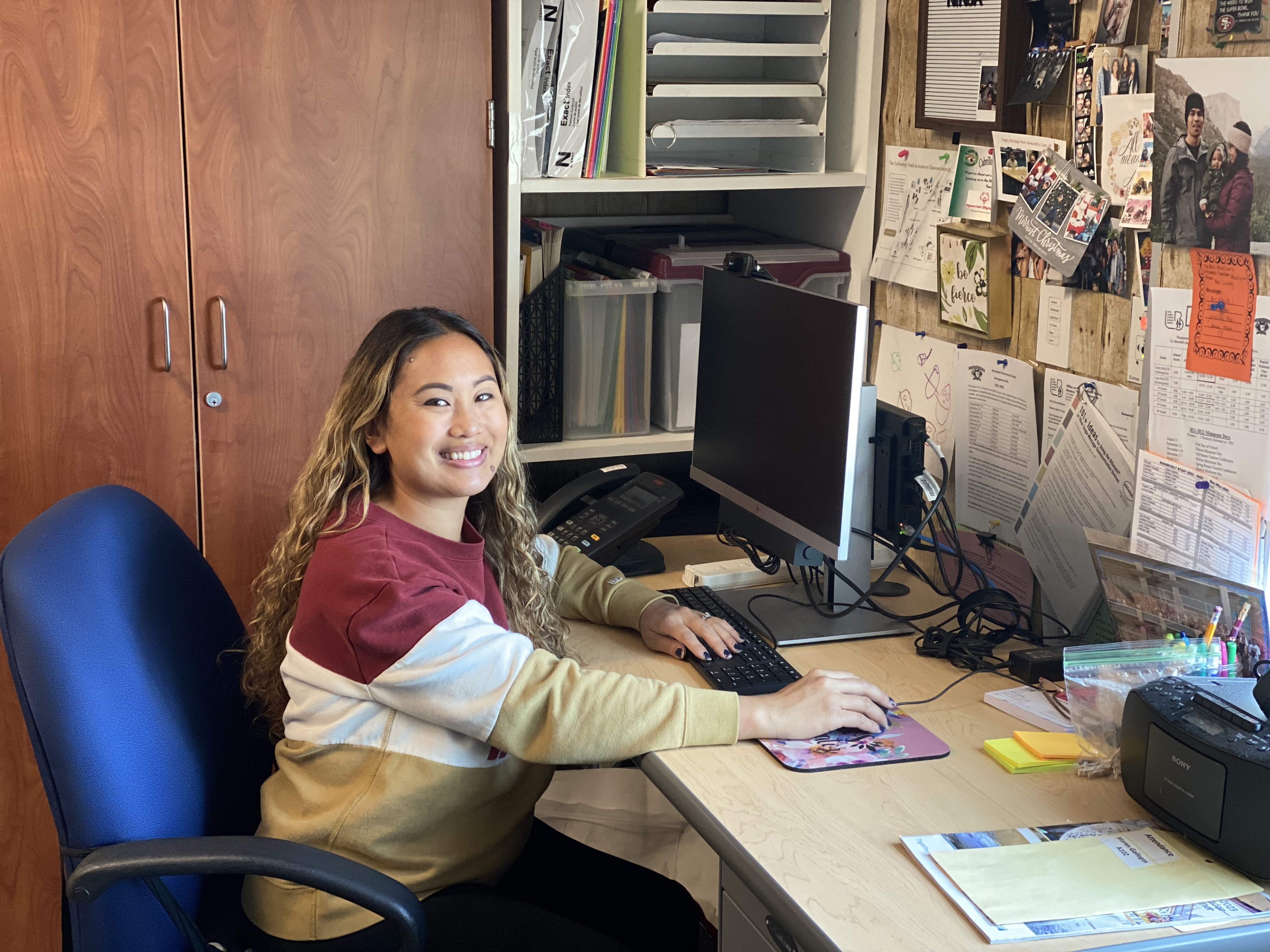Are you a special education teacher working with paraprofessionals in your classroom? While the support can be amazing, working with paraprofessionals can be our toughest job. These are my tips for working with paraprofessionals that have proved helpful to me over the years.
Behind every great special education teacher is a team of paraprofessionals who has their back. I would not be able to do my job without my classroom paraprofessionals. In my self-contained classroom, we have a 2:1 student to adult ratio. One of the most challenging and best parts of my job are the relationships I’ve built with my paraprofessionals.
Here are my tips for teachers working with paraprofessionals that will help you build strong collaborative relationships in your classroom.
Clearly communicate expectations
Establish clear and specific expectations for the role of the paraprofessional and how they will support the students in your classroom. This is one piece of advice I wish l implemented sooner. I learned the hard way that paraprofessionals are NOT mind readers. They have not had the same experiences you have had, and they didn’t have to sit through that “lovely” 4 hour PD that emphasized the benefits of the latest teaching strategy.
To clearly communicate expectations, it is important to be specific and measurable in your language, clearly state the desired outcome, and provide context for the expectations. It can also be helpful to provide examples or a clear plan of action to reach the desired outcome. Demonstrate the routines and strategies they are expected to implement with students. When you model and communicate what is expected, this increases the likelihood that things will be done the way you expect. Open and ongoing communication can also help to ensure that expectations are understood and met.
Collaborate and communicate
Establish regular communication with paraprofessionals and collaborate on strategies to support student learning. Be supportive and establish trust with your paraprofessionals. Be available to answer questions, provide guidance, and offer support when needed. They should feel comfortable to approach you with any questions or concerns they may have.
The success of my students is determined by our ability to collaborate and work as a team. I involve my paraprofessionals in the planning process. We work together to brainstorm strategies for addressing IEP goals, behavior needs, and classroom activities. Including them as part of the planning process creates understanding and increases the effectiveness of implementing strategies.
It is also important to have open and transparent communication among team members to ensure that everyone is on the same page and can easily share ideas and provide feedback. Regular check-ins and team meetings can help to keep everyone informed and on track, and can also help to build a sense of camaraderie and teamwork among team members.
Respect their roles
Recognize and respect the important role that paraprofessionals play in the classroom and the valuable contributions they make to student learning. Never ask a paraprofessional to do something you wouldn’t do! I will die on this hill. Paraprofessionals implement behavior support, medical care, and support personal care. Everything I ask my paraprofessionals to do, I do too.
Please teat your paraprofessionals as equals and not subordinates. In my classroom I have a paraprofessional who is a former teacher, one who holds a doctorate, one with multiple bachelor’s degrees, and one with more years of experience in a classroom than me. My title as teacher does not make me better than them. When we respect our classroom aides, we empower them to support the needs of the classroom even when we are not present.
Provide regular feedback
Provide regular and constructive feedback on their performance, and be open to feedback from them as well. Be specific and actionable. Suggest specific actions that the person can take to continue or improve their good performance. Be respectful, feedback should be delivered in a respectful and professional manner.
Provide positive feedback.Our students thrive off of positive reinforcement, so of course the same rings true for the adults in our classroom. Positive feedback can help boost morale, provides engagement and motivation. Recognize paraprofessional’s progress and meaningful work. When paraprofessional’s feel good about their job, it can enhance their ability to work well with students.
Make use of their skills
Make use of the paraprofessional’s unique skills and strengths to benefit the students in your classroom. Math is my least favorite subject, but luckily one of my aides LOVES math. I let her lead small group math instruction and implement some of her ideas for math lessons. Another paraprofessional of mine is an amazing event planner. Guess who’s in charge of setting up classroom celebrations?
All paraprofessionals bring unique skills, talents, and experiences to the classroom. This means there are countless ways they can support you and your students. Assign tasks and projects that align with your paraprofessionals’ strengths and skills, this will increase their engagement and productivity.
Take the time to get to know your paraprofessionals, understand their strengths and interests, and identify areas where they excel. Encourage your paraprofessionals to share their knowledge and skills with each other, this will help to build a culture of learning and development. By utilizing the skills of each paraprofessional, you can create a more efficient and effective team, and help everyone to grow and develop.
“Teamwork Makes the Dream Work”
This is THE mantra in my classroom. You and your paraprofessionals can work together to move mountains with your students. Start with a relationship built on respect, communication and teamwork. There needs to be a collaborative effort to work together to achieve the common goal of student success in the classroom.
Every team needs a leader. Lead by example and demonstrate the behavior and attitudes that you expect from your paraprofessionals. Leading by example is not only a way to influence others, but it also helps to create a positive classroom environment and builds morale among the team.


